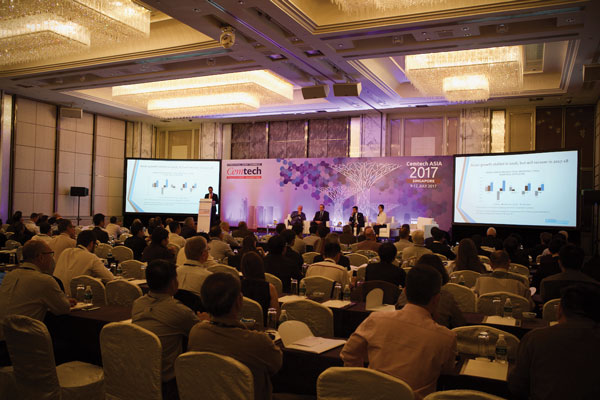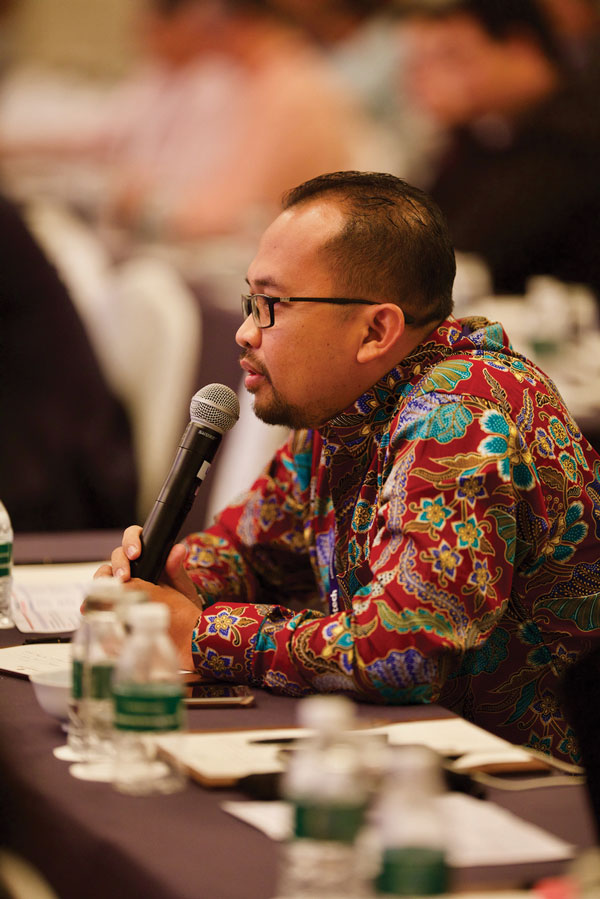Cemtech's Singapore success
Cemtech’s annual Asia conference returned to Singapore for the first time since 2008, bringing together over 200 cement producers and industry stakeholders from 40 nations. Senior industry figures shared views on dynamic Asian cement industry developments and technology, with expert presentations on grinding, alternative fuels and other manufacturing topics. Another resounding success for Cemtech!

Cemtech Asia opens with a review of trends across global and Asian cement markets
In his opening remarks conference director, Thomas Armstrong, managing editor of International Cement Review, set the scene with a review of cement market trends across the world with a specific focus on developments in Asia. Worldwide cement consumption climbed by 1.8 per cent in 2016 to 4.1bnt according to data recently published in The Global Cement Report, 12th Edition. Of this, Asian countries consumed 3.1bnt of cement in 2016 (75 per cent), while south Asia alone consumed 209Mt in 2016.
Asian growth outside of China stalled in 2016, falling by 0.2 per cent in south Asia, due to weakness in key markets such as Thailand and Malaysia. Looking ahead to 2018, however, cement demand is expected to pick up, with 2018 growth forecast at 3.5-4 per cent.
The keynote presentation was delivered by Emir Adiguzel, CEO of HC Trading (Germany), a company that traded 24Mt of cement and fuels in 2016, making it a world leader in this field. Mr Adiguzel noted that although freight rates are at historical lows, global trade has softened in recent years. In 2017 the abundant surplus generated from Asia has partially dried up due to production cuts in China resulting in a lower exportable volume. Additionally, strong domestic demand in Asia, especially in South Korea, Thailand and Vietnam, are also seeing a lower exportable surplus. Meanwhile, in the Mediterranean region, resilience in the European markets is also restricting supply, which together with the Asian situation is reflected in higher export prices.
Following on, Manas Tamotia, managing director of LEK Consulting (Singapore), presented a slightly more cautionary view from the perspective of the south Asian markets, arguing that significant oversupply is now becoming a critical issue. Demand in the region has stalled, he warned, while capacity has continued to increase. Furthermore, regional markets should be wary of the potential impact of China’s 800Mt theoretical surplus, with current export levels still below their 2006 peak of 36Mt.
This view was challenged by Grace Chen, vice director of the China Cement Association, who argued that while China may be entering a phase of lower growth, the industry would rein in any surplus through aggressive capacity reductions, and that no significant export surge would materialise. Indeed, by 2020 the industry will shut down 400Mt of clinker capacity, to address the supply-demand balance, and it targets utilisation rates of 80 per cent, up from their current level of 68.1 per cent.
Turning to southeast Asian markets, independent industry consultant Martin Wilkes explained that although cement consumption in Indonesia has been lacklustre of late, long-term fundamentals will continue to drive annual demand growth at around five per cent. Overcapacity exists but will gradually be absorbed by the market and he expects a reasonable utilisation rate of 80 per cent by 2018 (integrated capacity only).
Staying with the region, Lan Nguyen, MD of StoxPlus (Vietnam), offered an insightful overview of the Vietnam cement sector, where domestic sales expanded at a rate of 5.7 per cent in the 1Q17. Ms Nguyen also reviewed the Vietnamese concrete market, which is rapidly developing, with consumption reaching 46.8Mm3 in 2016. In spite of the healthy domestic growth Vietnam has a considerable capacity surplus. In 2016 volumes of cement and clinker exports reached 17.1Mt, and continued to expand by 10 per cent in 1Q17.
Trade and logistics
Marilyn Gardner, MGardner Consultancy (Australia), observed how the role of cement trading has become an increasingly important tool for the industry to manage surpluses and maintain stability in domestic markets. In 2016 cement and clinker exports in the Asia-Pacific region reached 66.5Mt, led by China (18Mt), Vietnam (14.7Mt), Japan (11Mt) and Thailand (11Mt). In her view, China is expected to export less in 2017 at just 11Mt compared to the year before, as a result of government initiatives to reduce domestic production. The main importers will be Bangladesh (mainly clinker), the Philippines (demand from new infrastructure) and Hong Kong (airport expansion).

The conference programme sparked plenty of interest
from the audience of over 200 cement industry specialists

